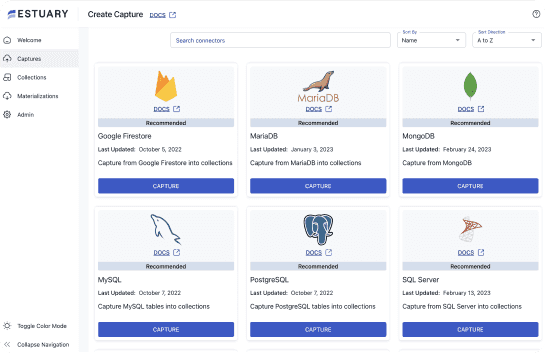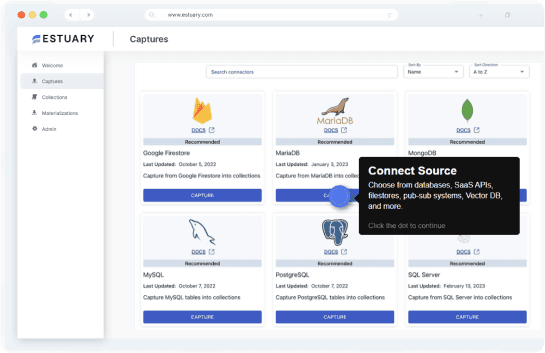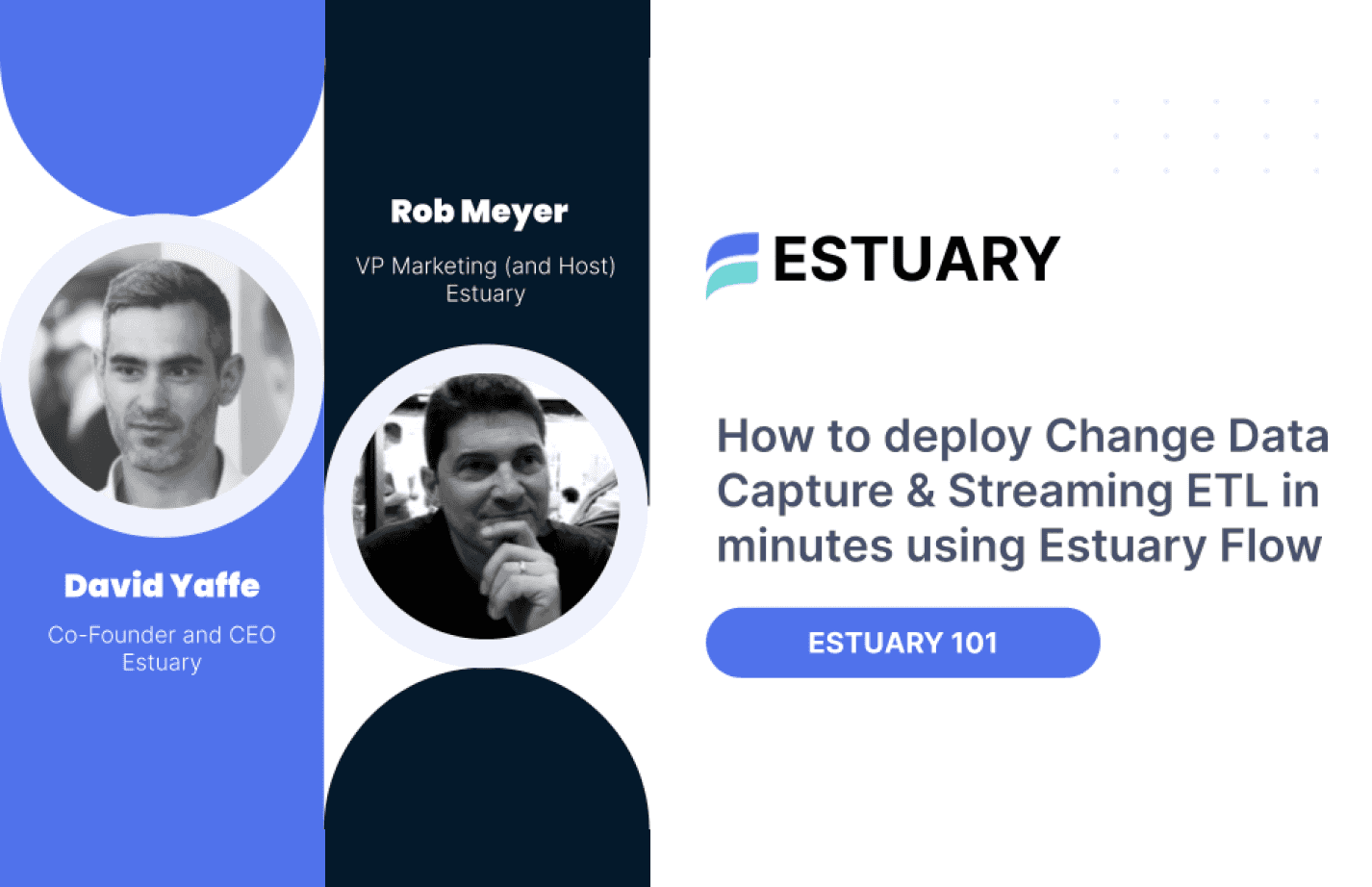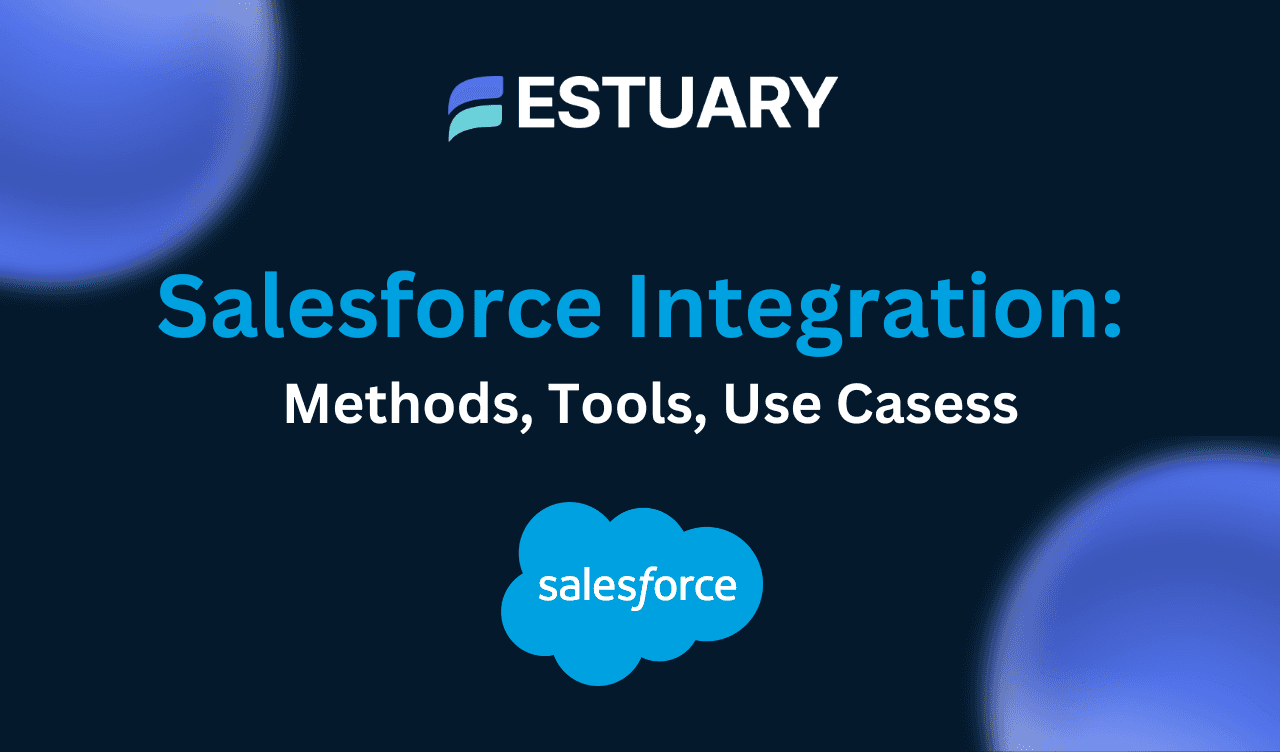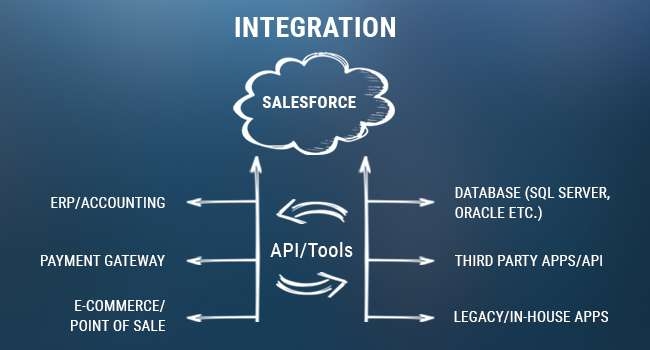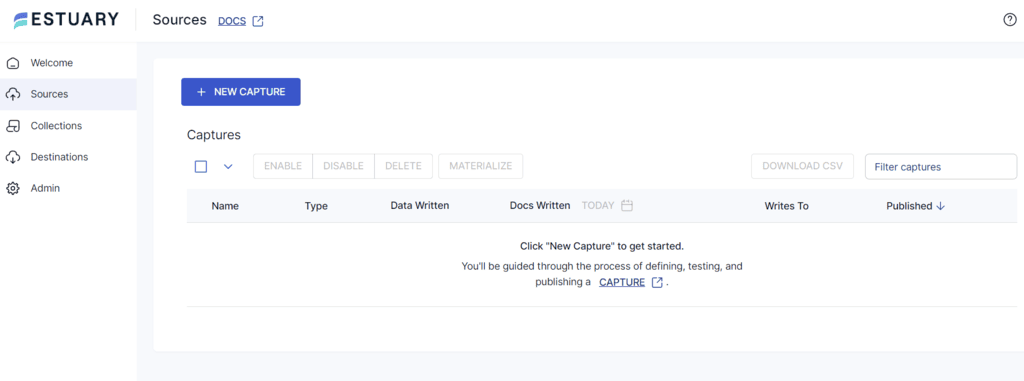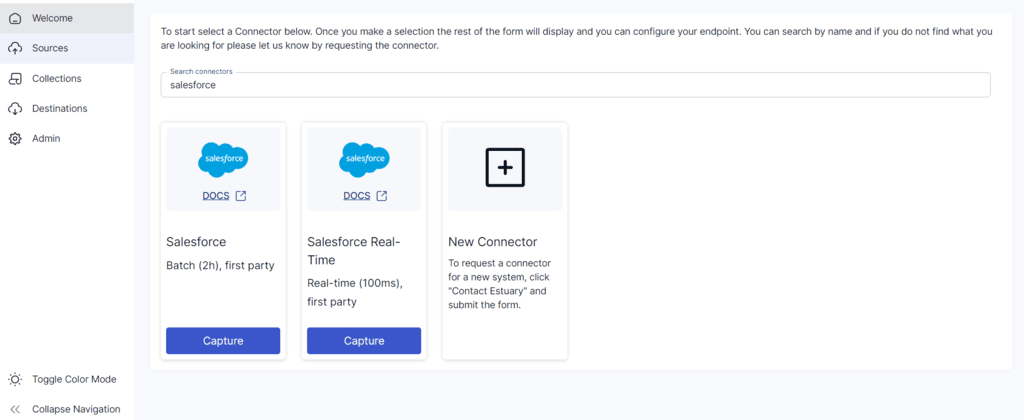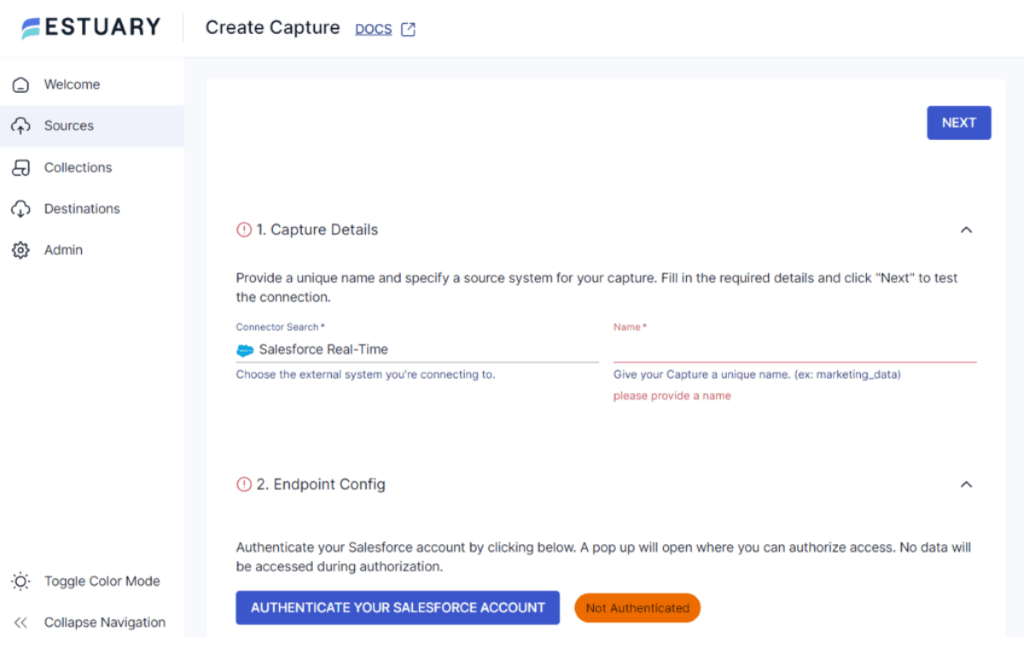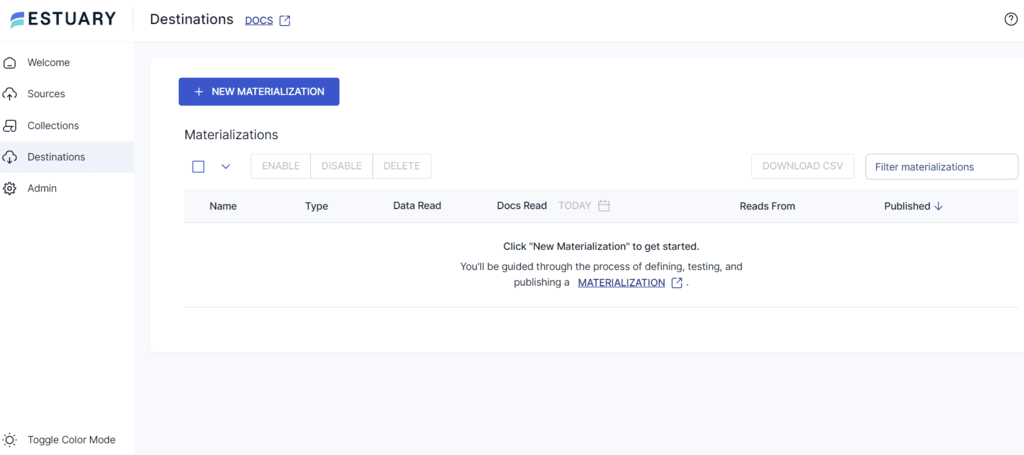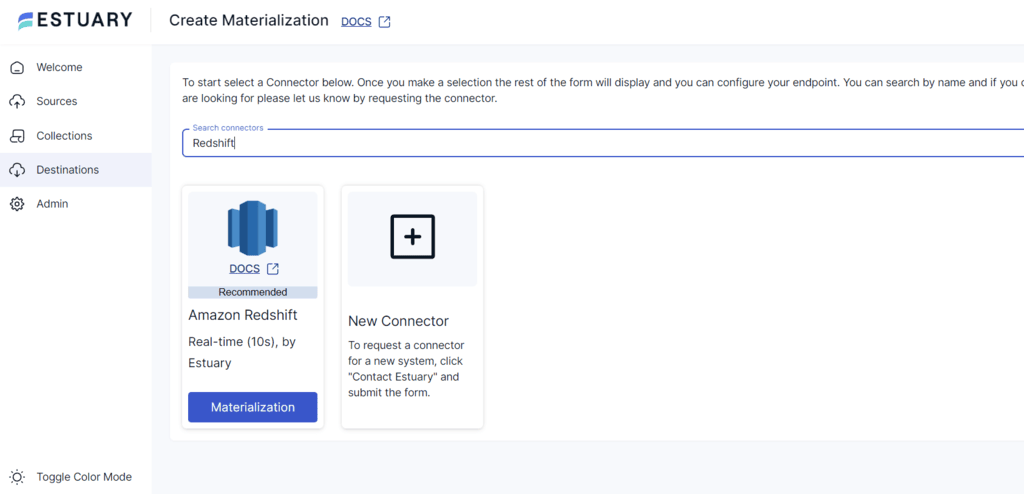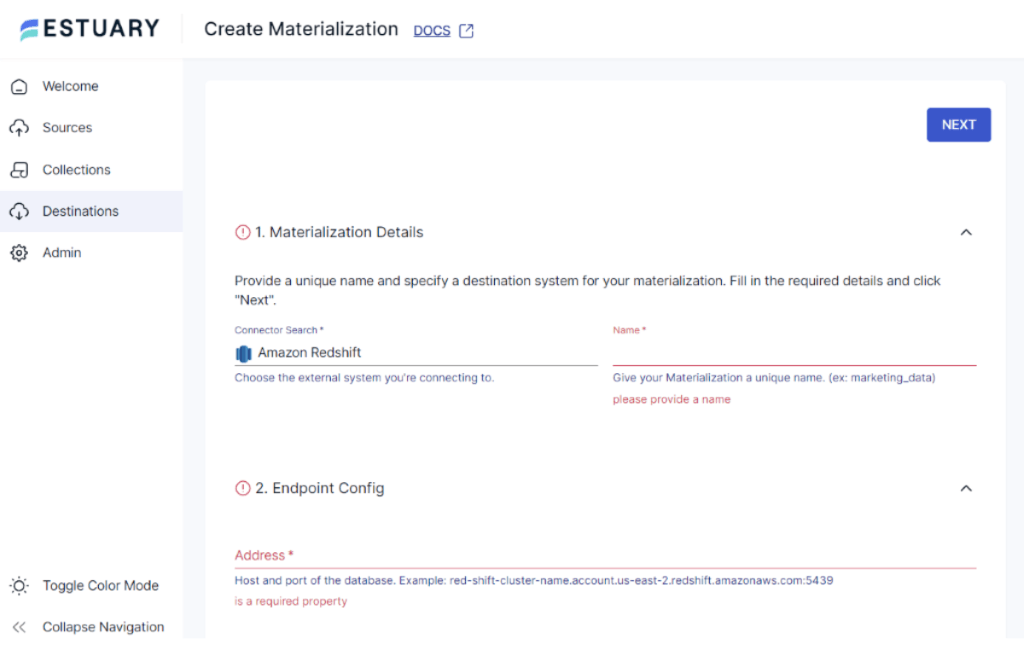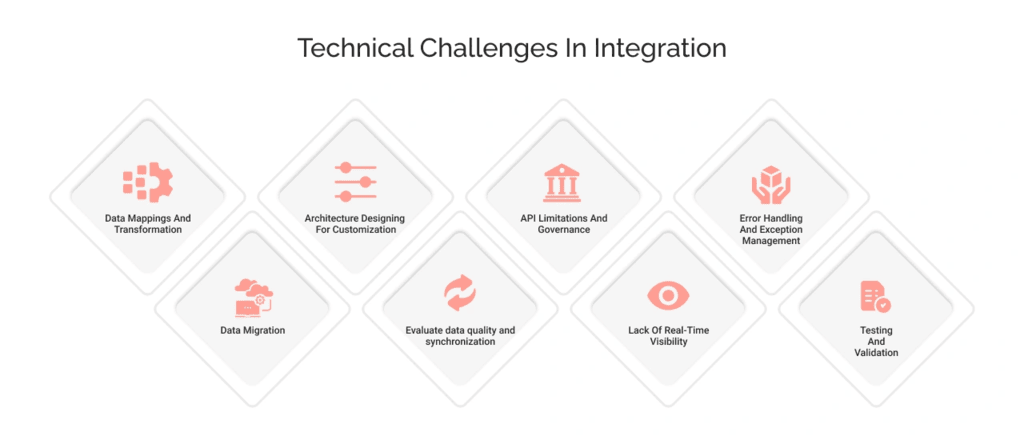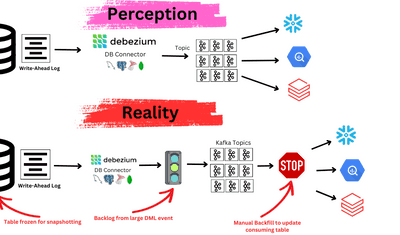
Salesforce is a cloud-based customer relationship management (CRM) software. It helps simplify your sales, marketing, and customer service by centralizing customer data. You can connect with customers, track interactions, and personalize outreach through insights from Salesforce’s in-depth analytics.
The platform’s scalability and flexibility make it a popular choice across various industries. However, to maximize its potential, you can combine Salesforce with other data solutions. The streamlined data sharing between these platforms can ensure all your business operations run efficiently.
What You'll Learn in This Guide:
- What is Salesforce integration & why is it important?
- The top three Salesforce integration methods
- Real-world use cases & benefits of integration
- Common challenges & best practices for seamless integration
Jump to the Salesforce integration methods section if you're already familiar with the basics.
What Is Salesforce Integration?
Salesforce integration involves connecting the Salesforce CRM with other systems, applications, or databases. This creates effective data workflows that you can use to automate tasks, synchronize data across platforms, and enhance overall productivity.
Key Benefits of Salesforce Integration
- Improved Data Accessibility: Integrating Salesforce with multiple sources makes it easier to access and utilize data across teams in real-time, promoting better collaboration.
- Informed Decision-Making: Salesforce integration helps you break down data silos and provides a comprehensive view of your data. This allows you to respond quickly to upcoming trends and opportunities.
- Enhanced Customer Experience: With Salesforce integrations, you can get a 360-degree view of customer data across multiple channels. This helps you tailor offers and recommendations based on individual preferences.
- Stronger Security and Compliance: By integrating Salesforce with data governance or security tools, you can protect sensitive data while complying with industry standards.
- Reduced Costs: Salesforce integration facilitates automatic updates, data backups, and security patches. This reduces the IT overhead and maximizes return on investment (ROI).
Common Use Cases for Salesforce Integration
You can leverage Salesforce integration architecture and improve various aspects of your business operations, increasing profitability. Here are some example use cases across industries and integration systems:
Salesforce Integration with Data Warehouses
Integrating Salesforce with a data warehouse allows you to centralize, analyze, and report on large datasets. These extracted insights help you optimize your workflows and achieve substantial growth. Below are some use cases involving Salesforce integration with popular data warehouses:
Salesforce Integration with BigQuery
Integrating Salesforce and Google BigQuery can benefit your marketing teams. It lets them combine CRM data with broader customer behavioral data collected from various digital campaigns.
Your team can analyze this data using BigQuery’s advanced analytics and machine learning workflows. This will help them perform segmentation, create personalized marketing strategies, and understand customer journeys. Using such targeted approaches can improve your return on investment (ROI).
Salesforce Integration with Snowflake
Financial organizations can take advantage of the Salesforce-Snowflake integration. It allows you to associate customer data with transactional data. Snowflake’s warehousing capabilities and Salesforce’s CRM tools simplify several time-consuming tasks. These include generating profitability reports, assessing credit risks, and enhancing financial forecasting.
Snowflake’s data-sharing and multi-cloud architecture facilitate secure data access across multiple teams. This integration can also help your compliance and risk management efforts, allowing the identification of suspicious customer behavior and preventing significant financial damage.
Salesforce Integration with Redshift
A Salesforce-Amazon Redshift integration enables zero-copy data federation. It lets you access Redshift data in real-time without the need to copy it. The integration is best suited to improve user experience by streamlining supply chain management.
You can connect sales data from Salesforce and inventory information from Redshift for demand forecasting, stock management, and pricing optimization. Your customers also get up-to-date information on product availability or promotional offers, increasing customer satisfaction.
Salesforce Integration with Databricks
Integrating data between Salesforce and Databricks can help organizations in the healthcare sector. It gives them a complete view of their patients' records, facilitating better decision-making. Healthcare centers can also leverage the machine-learning capabilities of Databricks to reduce their workload.
Using the Salesforce-Databricks integration, medical professionals can automate case routing, perform historical data analysis, and accelerate diagnosis. This enhances patient care and simplifies the treatment process.
Salesforce Integration with Collaboration Tools
Salesforce integration with collaboration tools improves team productivity. It supports streamlined communication and data sharing across departments. Such an integration also ensures that updates from your CRM system are readily available within an employee’s day-to-day tools.
Salesforce Integration with Slack
Your sales team can utilize the Salesforce-Slack integration to implement effective lead management. Team members can receive Salesforce notifications and lead updates directly in Slack. This workflow automation ensures no lead slips through the cracks and maintains transparency across teams.
Salesforce Integration with Google Sheets
Not all your team members might be familiar with Salesforce. By syncing Salesforce with Google Sheets, you can make your data accessible to everyone. This allows them to view, edit, and analyze data easily in a familiar environment, enhancing user engagement and data interaction.
Salesforce Integration with Marketing Platforms
Combining Salesforce data with information from marketing platforms like HubSpot or Marketo creates a unified marketing and sales funnel. This helps your marketing teams track the lead’s engagement with campaigns across multiple channels. If the interactions have a positive outcome, the sales team can follow up and improve conversion rates.
Salesforce Integration with E-commerce Platforms
You can integrate Salesforce with e-commerce platforms like Shopify. This allows you to study website traffic, track order history, and identify customer pain points. This provides you with valuable insights for offering tailored product recommendations, promotions, and post-purchase support.
Salesforce Integration Methods: How to Connect Your Data
You can employ several integration methods to connect Salesforce with other systems. Some of them include using Salesforce integration tools, APIs, or connectors. Here are the top three options for you to explore:
Using Estuary Flow: A Real-Time Salesforce Integration Tool
Salesforce integration tools can help automate processes and speed up data sharing. Among these tools, Estuary Flow, a real-time ETL tool, sets itself apart by offering easy-to-setup and affordable data integrations. It simplifies data movement by providing a library of 200+ pre-built connectors. These connectors help you transfer data incrementally in batches or in real-time.
Estuary Flow also includes a CLI and an intuitive UI-forward web application. This makes the platform accessible to both technical and non-technical users, enabling anyone to complete integrations.
Why Choose Estuary Flow for Salesforce ETL/ELT Integration?
- Transformation: Estuary Flow supports real-time data transformations, allowing you to maximize your data’s utility. You can use SQLite or TypeScript to transform data in your ETL pipelines and dbt for ELT pipelines.
- Many-to-many Connections: You can pick and choose multiple data sources and destinations. You can also join tables, manage complex data relationships, and retrieve data quickly through foreign key referencing.
- Deployment Options: Estuary Flow offers three flexible deployment options to meet your organization’s data needs. These include Public Deployment, Private Deployment, and Bring Your Own Cloud (BYOC). You can choose between them based on your security requirements, compliance standards, and infrastructure capacity.
🚀Here is a step-by-step guide to implement Salesforce integration with Estuary Flow:
Prerequisites:
- A Salesforce organization with enterprise-tier or equivalent API request allocation.
- Authentication credentials for Salesforce.
- A dedicated, read-only Salesforce user.
- An Estuary Flow account.
Step 1: Configure Salesforce as a Source
- Sign in to your Estuary Flow account.
- Click the Sources option on the left panel of the dashboard. This will redirect you to the Sources page.
- Click the + NEW CAPTURE button, and type Salesforce in the Search connectors field.
- Estuary Flow offers two Salesforce connectors: a Batch Connector and a Real-Time Connector. For this tutorial, let’s use the real-time option.
- Click the corresponding connector’s Capture button.
- You will be redirected to the Create Capture page. Here, you must provide a unique name for your capture and authenticate your Salesforce account.
- After this, click NEXT > SAVE AND PUBLISH to complete the configuration.
With this, you have configured Salesforce as your data source. The connector will capture data from Salesforce objects via the Salesforce PushTopic API and put it into a Flow collection in real-time.
Step 2: Configure a Destination of Your Choice
Estuary Flow provides destination connectors for data warehouses, SaaS apps, cloud platforms, and more. You can choose the one that best suits your requirements. For this tutorial, let’s consider Amazon Redshift as the destination.
- Click the Destinations option on the dashboard.
- You will be redirected to the Destinations page; click the + NEW MATERIALIZATION button.
- Type Amazon Redshift in the Search connectors field and click the connector’s Materialization button.
- On the connector configuration page, fill out all the mandatory fields. These include:
- Name: Give a unique name to your materialization.
- Address: Enter the host and port of the database.
- User: Provide your username to establish the connection.
- Password: Enter your password for authentication.
- S3 Staging Bucket: Name of the S3 bucket used for staging data loads.
- Access Key ID: Provide the AWS Access Key ID for reading and writing data to S3.
- Secret Access Key: Fill out the AWS Access Key to read and write data in S3.
- Region: Mention the region of the S3 bucket.
- In the Source Collections section, click SOURCE FROM CAPTURE to link your Salesforce data to this materialization.
- Click NEXT > SAVE AND PUBLISH to materialize your collection of Salesforce data into Redshift.
🚀 Streamline your Salesforce integration with Estuary Flow – Try it for free or Contact us for any help!
Native Salesforce Integrations: Built-in Tools for Seamless Connectivity
Implementing native Salesforce integration involves using Salesforce's built-in tools to connect with other systems and applications. Salesforce Connect and AppExchange are the two most widely used tools for integrating other apps with the Salesforce platform. They are easy to set up and often require minimal technical expertise.
Salesforce Connect
Salesforce Connect offers streamlined integration with external data sources without having to copy data into your Salesforce environment. It allows you to view, search, and modify external data in real-time via web service callouts. With Salesforce Connect, you can access data on demand and minimize storage issues. It is a good choice when you work with large datasets or require real-time access to the latest information.
AppExchange
AppExchange is Salesforce’s marketplace for apps, components, and consulting services. These apps provide a plug-and-play solution that extends the capabilities of your CRM platform. Whether you need to enhance customer service or integrate with other business systems, AppExchange likely has apps to suit your needs. You can install these third-party integrations to help increase your overall productivity.
API-Based Salesforce Integration: Connecting Data Through APIs
Salesforce offers several APIs for integrating with other platforms, including the Bulk API, Tooling API, and more. You can choose the API that best suits your requirements based on the supported data formats and your use cases.
- REST API: This lightweight and flexible API allows you to interact with Salesforce data using standard HTTP methods. Unlike some other web services, it doesn’t require WSDL (Web Service Description Language) for setup. This simplifies integration between applications. Salesforce REST API supports JSON and XML data formats and is ideal for mobile or web apps needing quick data retrieval.
- SOAP API: The SOAP API is useful for enterprise-level integrations that require secure data exchanges. You can use it to create, update, and delete records, perform search operations, and fetch results from external applications. The API supports XML data format and synchronous communication.
- Metadata API: This API allows you to deploy and manage customizations within your Salesforce org. You can use the Metadata API to migrate changes from a sandbox (testing) environment to the production environment. It also helps develop tools to interact with the metadata model and not just the data itself. You can easily access Metadata API’s functionality with Salesforce Extensions for Visual Studio Code or the Salesforce CLI.
- Pub/Sub API: Salesforce’s Pub/Sub API facilitates scalable, bi-directional event integration with external systems. It lets you publish and subscribe to event messages in the Apache Avro format. The API is based on gRPC and HTTP/2 and accommodates asynchronous communication.
➡ Read Salesforce API documentation.
Challenges in Salesforce Integration & How to Overcome Them
While implementing a Salesforce integration architecture has many benefits, it also raises certain challenges. This can significantly impact your decision-making and operational efficiency.
Some of the drawbacks are listed below:
Data Mapping Issues
Data residing in different platforms is often stored in diverse formats. This can lead to discrepancies when you try integrating the data. For example, fields in one system may not directly correspond to those in Salesforce, resulting in incomplete or inaccurate data transfers.
API Limitations
Salesforce limits the number of API calls and concurrent API requests you can make within a specific timeframe. If your organization has high data transfer needs, these constraints can slow processes or cause system outages. To overcome this, you must purchase additional API capacity, which can add to your operational costs.
Architectural Complexity
Developing a Salesforce integration architecture design that ensures data consistency across all platforms can be difficult. Without proper planning, it can result in inefficient workflows, data silos, and redundancies.
Many of these challenges can be overcome by using the proper tools for the job. A data pipeline tool like Estuary Flow will help you standardize data formats, set data intervals to avoid API rate limits, and reduce your own architectural burden.
Final Thoughts: Choosing the Right Salesforce Integration Strategy
Salesforce integration allows you to connect with other systems to automate tasks, improve data visibility, and make more informed decisions, enhancing your organization's efficiency. While Salesforce offers integration tools like AppExchange, APIs, and connectors, Estuary Flow is an easy-to-use option that keeps all your integrations in one place.
Any user, irrespective of their technical background, can use Estuary Flow to implement Salesforce integrations. It offers features like multi-connector ETL and ELT workflows to move data with minimal latency. The pre-built connectors and diverse deployment options make Estuary Flow a versatile and accessible tool.
Learn more about how you can utilize Estuary Flow for your specific use cases by connecting with our experts. You can also try the platform for free to get familiar with the interface.
FAQs: Everything You Need to Know About Salesforce Integration
Can I integrate Salesforce with multiple other systems at once?
Yes! Many businesses find it useful to connect their Salesforce data with more than one system. For example, you may want to store Salesforce data to a warehouse on a batch schedule for future analytical purposes while also sending real-time updates to Slack as new lead information comes in. Data pipeline tools like Estuary Flow can simplify this kind of setup by centralizing all your connections. And you’ll only need to set up your Salesforce source connector once to use it with multiple destinations.
What are some different types of Salesforce integration architecture?
There are three main types of Salesforce integration architecture:
- Hub-and-Spoke integration
- Point-to-Point integration
- Enterprise Service Bus (ESB) integration
What are Salesforce integration patterns?
Salesforce integration patterns are architectural approaches to connect Salesforce with external systems. Typical examples of these patterns include:
- Request-Response
- Batch Data Synchronization
- Fire-and-Forget
- Remote Call In
- Data Virtualization

About the author
With over 15 years in data engineering, a seasoned expert in driving growth for early-stage data companies, focusing on strategies that attract customers and users. Extensive writing provides insights to help companies scale efficiently and effectively in an evolving data landscape.
Popular Articles

